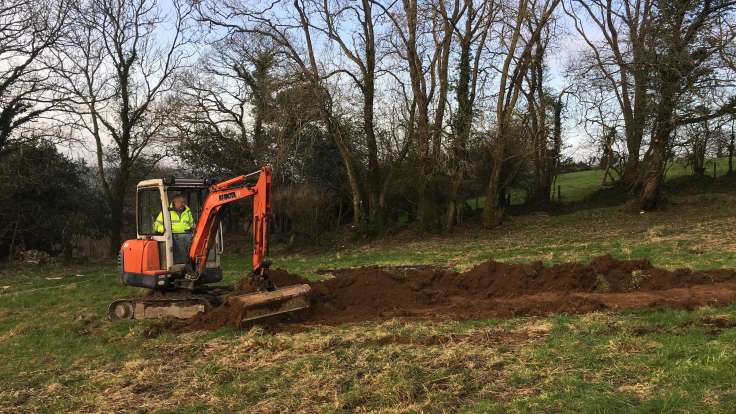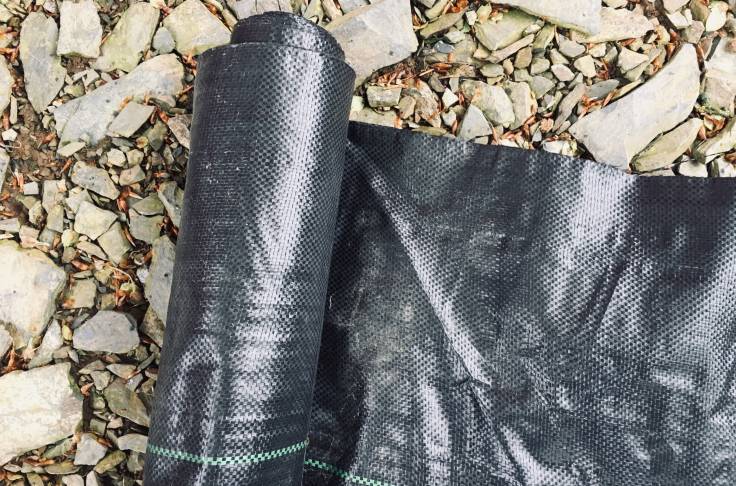
Scraping away the grass with a mini-digger may be a less wasteful approach
The “traditional” way of clearing the ground is to use sheet mulch. An alternative and possibly less wasteful way is to scrape the ground with a mini-digger.
In the original forest garden, I used vast amounts of woven plastic sheet mulch to clear the grass, before laying down bark mulch and planting perennial ground cover (a process I’ve described previously). I now recommend that people use less of a higher quality sheet mulch, like Phormisol or Mypex, over a longer period of time. But still, I’m not happy about the use of plastic, because it will have to be binned at some point.
After having a pond dug in the Ornamental Forest Garden, I thought another way would be to use a mini-digger to scrape the grass off.

Woven plastic sheet mulch in a roll
It would be one day’s work at a total cost of about £200. This includes about £20 worth of diesel, which to my mind is less environmentally damaging than square metres of woven plastic sheet mulch.
The downside to using a mini-digger in one fell swoop is that I need to have all the ground cover plants ready to go. Using the power of QCAD, I’ve calculated that there’s about 1700m² area to plant up. That equates to about 7,000 ground cover plants (four per square metre). 7,000. Seven thousand. That’s a lot.
There’s also the small detail of mulching material. I prefer bark if I can get hold of it, as it’s lighter and can come in larger pieces, so you get more for your money. I roughly calculated it’s just under a tonne per 100 square metres, so that’s 15 tonnes. At an optimistic cost of £50 per tonne, that’s £750.
Do remember, this is for a large garden of about an acre. With a small forest garden, you could feasibly use a cardboard mulch or remove the grass by hand.